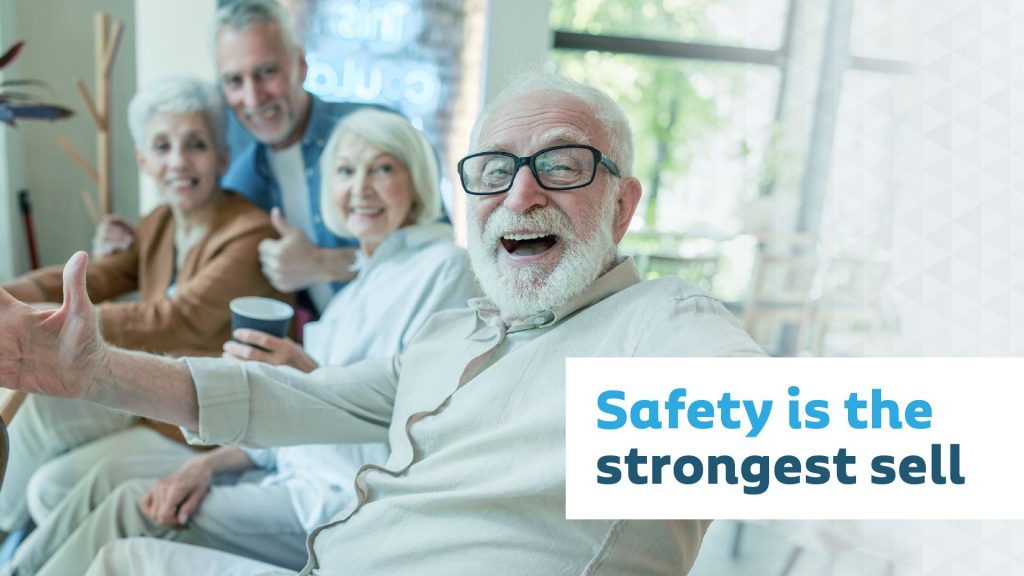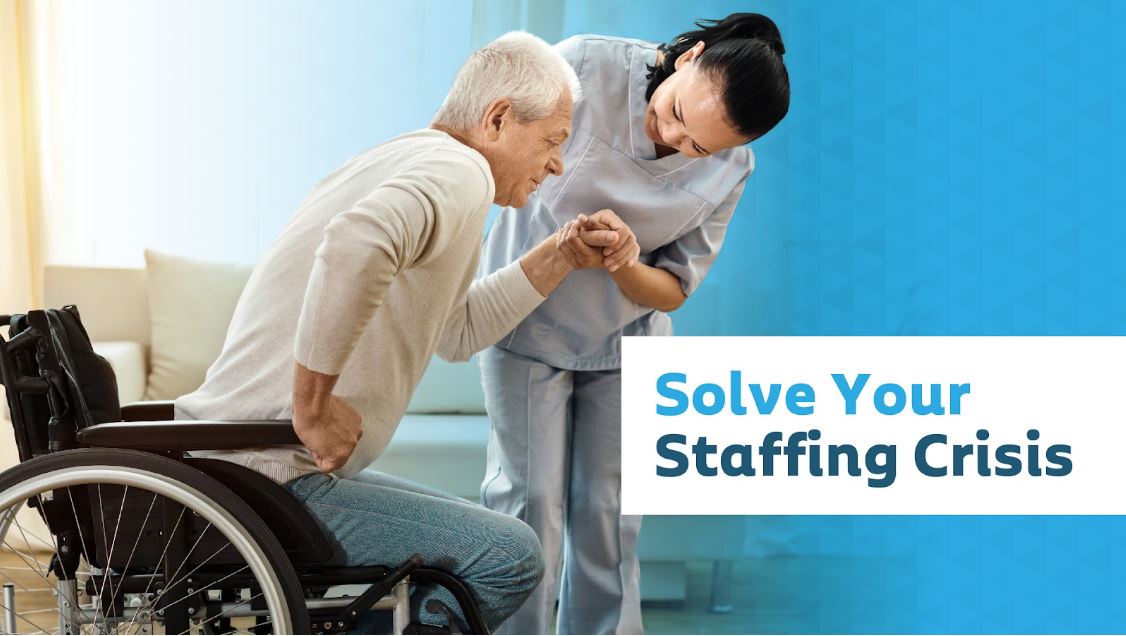Main Menu
Posted by Vayyar
June 17, 2024Senior living occupancy: why selling safety as a service means more move-ins

Senior living occupancy has recovered from the perfect storm it weathered in recent years. But competition between providers is still fierce, with a host of new players entering the market and industry-wide pressure to offer concessions.
That’s why many leading operators have taken the lessons of the pandemic era to heart. Successful senior living sales strategies now focus less on dining and programming than on safety, health, and wellness. And the place where those three circles intersect is fall management.
What motivates move-ins?
Falls or medical diagnoses, which invariably increase fall risk, are primary reasons for almost half of all senior living move-ins. The likelihood of suffering an unwitnessed fall at home – and the potentially catastrophic consequences of a long lie – are just too high for someone who’s already fallen. After all, one fall almost invariably leads to another. Fear of falling is a powerful motivator.
That’s not to say that long lies don’t happen in senior living. In fact, fall-related claims make up well over half of all assisted living negligence claims. And the immediate financial cost in terms of higher insurance premiums is only part of the equation. Failing to deliver on a core duty of care is a severe blow to any care business. The reputational damage to a community, and therefore to senior living occupancy, can be hard to overcome.
Safety: rapid response is essential
The industry’s reliance on reactive legacy devices is partially responsible. Standard wall-mounted buttons or cords are typically out of reach after a fall, even if the resident is physically and mentally capable of raising the alarm.
Wearables such as pendants, meanwhile, are widely underused. While some residents strongly object to putting them on, seeing them as a stigma, many more simply forget, especially those living with some form of cognitive impairment.
Then there’s video. While many decision makers are keen on cameras as a way to protect loved ones with advanced dementia, CCTV inevitably provokes strong negative reactions among older adults for whom privacy is a precious commodity. And whatever one’s views on cameras in bedrooms, the simple fact is that no optical monitoring solution can be installed in bathrooms, where 80% of falls – and most serious falls – happen.
For the decision-makers of people living with dementia, there’s also the issue of “hidden” falls. An estimated 50% of falls are never reported, massively increasing the risk that residents face.
That’s why leading care providers are turning to 4D imaging radar technology, It offers comparable resolution to cameras, without the privacy issues. Instant, fully automatic fall detection in all conditions – including darkness and steam – ensures that residents get help faster, increasing their chances of a swift recovery.
But fall management isn’t only about detection. It’s also about highlighting fall risk factors so that caregivers can anticipate and get ahead of that next fall. That’s a powerful sell to prospective residents and their families.
Health: multimorbidity multiplies fall risk
Higher acuity is fast becoming an acute crisis in the senior living industry. We’re living longer – but not healthier. Multimorbidity affects over 95% of adults over 65 and many of the most common conditions directly increase fall risk:
- 42% of residents have arthritis, with knee osteoarthritis significantly increasing the chances of a fall.
- 31% of residents have heart disease, with heart failure increasing fall risk by 13%.
- 25-34% of residents have type 1 or type 2 diabetes, with the latter pushing up fall risk by 59%.
In addition to fall detection, fall management services such as Vayyar Care constantly gather data on each resident’s behavior, including time in bed, in-room activity, and bathroom usage.
This data is used to generate care platform insights into sleep patterns, physical mobility, urinary health, and more, guiding personalized care to enable disease management and mitigation and effective fall reduction programs.
Wellbeing: happier residents are safer residents
Almost half of older adults in LTC facilities suffer from depression, which increases fall risk by 55% for seniors with 2 risk factors and 144% for those with 3-4 risk factors, irrespective of antidepressant use.
Social isolation effects, meanwhile, include an increase in the risk of stroke by 32%, heart disease by 29%, and dementia by 50%, all of which make falls far more likely.
By measuring changes in how long residents spend in bed, Vayyar Care allows caregivers to identify a common marker of depressive illness, while tracking time in room alone identifies residents who are socializing less.
Increase senior living occupancy by protecting residents – and the bottom line
With many providers wondering how to increase senior living occupancy, Vayyar Care’s sensor and platform technologies deliver end-to-end fall management: safety as a service. The ability to detect falls and identify fall risk while respecting privacy at all times is a compelling reason for a potential move-in to choose your community over the one down the street.
To learn more about how the industry’s most advanced fall management service can help you achieve competitive advantage, boost your tour-to-move-in conversion rate, and increase NOI, click here.
The Post URL was successfully copied to your clipboard
Read more on #elderly care

08 October 2024
Recruit, reinforce, and retain should be the mantra of any hiring manager.…
Read more
05 August 2024
We’re living longer, not healthier. Over 95% of people aged 65 or…
Read more
12 May 2024
Artificial Intelligence is on the verge of revolutionizing fall prevention in elderly…
Read more


